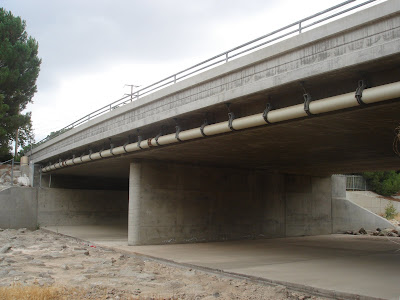 I was talking to a co-worker the other day about the water controversy in the state of California. You know the story. It's the problem that the environmentalists have created in their efforts to save a sardine size fish that lives in the Sacramento River Delta. They have cut off water to the farmlands of California and turned much of the state into a dust bowl like they had in Oklahoma in the 1930's. The environmentalists are hurting the people, the economy, and the state, and still they haven't figured out how to save this tiny fish. Meanwhile the price of vegetables is rising and we are forced to buy more of our food from foreign countries including China.
I was talking to a co-worker the other day about the water controversy in the state of California. You know the story. It's the problem that the environmentalists have created in their efforts to save a sardine size fish that lives in the Sacramento River Delta. They have cut off water to the farmlands of California and turned much of the state into a dust bowl like they had in Oklahoma in the 1930's. The environmentalists are hurting the people, the economy, and the state, and still they haven't figured out how to save this tiny fish. Meanwhile the price of vegetables is rising and we are forced to buy more of our food from foreign countries including China.Soon our conversation wondered over to the subject of how Man is impacting the behaviour of wild animals such as dear, bears, and wolves, by feeding them in our National Parks. He mentioned that it is now legal to hunt wolves. I reminded him that most wolves are big and bad, like we remember from the story of The Three Little Pigs and Little Red Riding Hood. He rejected my claim that wolves are bad, and we went back to our separate cubicles to work.
When I got back to my desk, I had a new Email from a friend of mine. It was related to the discussion I had just finished and I was amazed at the timing. The Email described the problem created as people are feeding wild animals in our National Parks. The poor animals are becoming dependent on the food they receive from people in the parks, and they have forgotten how to forage for themselves. The Email included the photo below, which shows evidence of this disturbing trend.
When I got back to my desk, I had a new Email from a friend of mine. It was related to the discussion I had just finished and I was amazed at the timing. The Email described the problem created as people are feeding wild animals in our National Parks. The poor animals are becoming dependent on the food they receive from people in the parks, and they have forgotten how to forage for themselves. The Email included the photo below, which shows evidence of this disturbing trend.

Animals such as this black bear, that were previously self-sufficient are now showing signs of belonging to the Democrat Party. They have learned to just sit and wait for the government to step in and provide for their needs. In the Email it claimed that the Democrat black bear in Montana, in the above photo, had been nicknamed "Bearack Obearma". I am not sure I believe all of this, but he sure looks helpless sitting there at the table waiting for his dinner.















